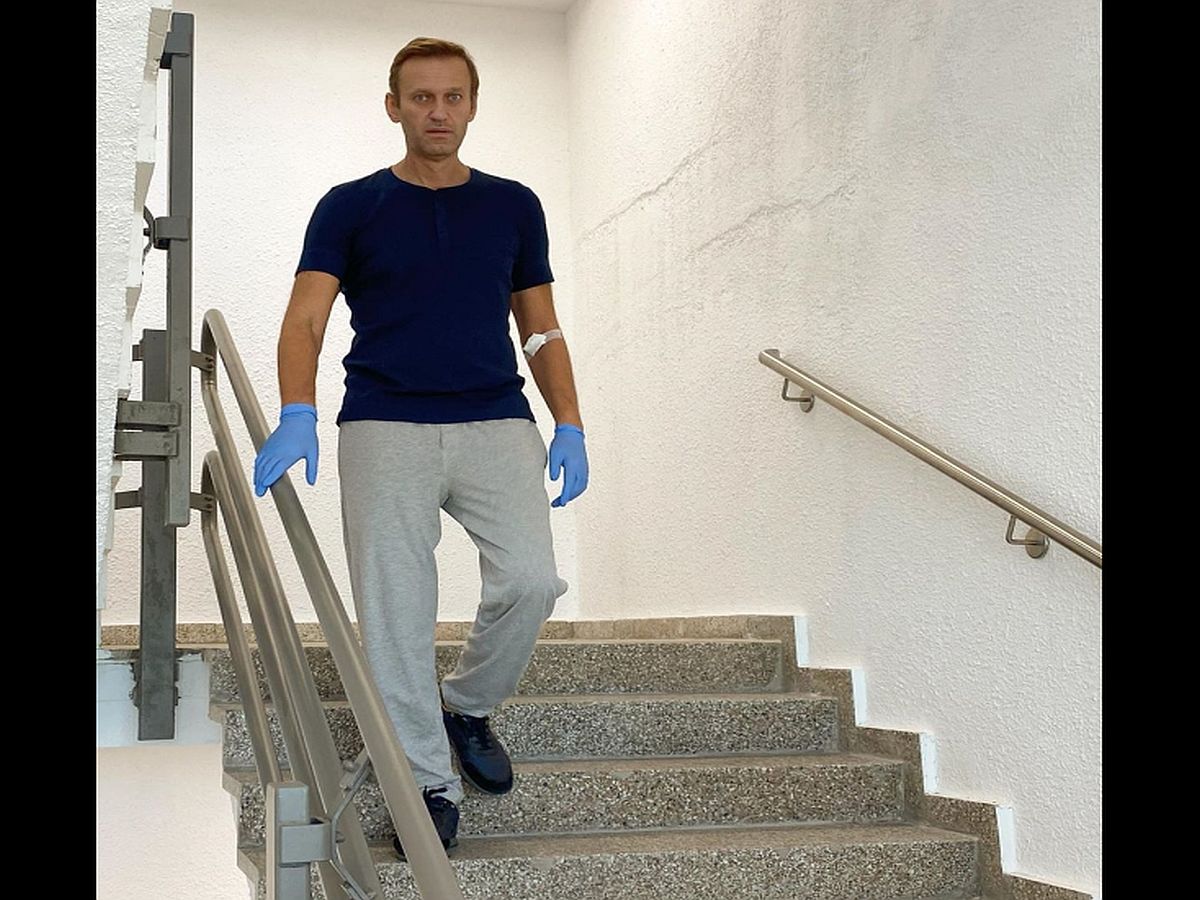The catchy slogan in Russia on Valentine’s Day ~ “Love is stronger than fear” ~ served to mould developments on Sunday in robust support of the dissident, Alexei Navalny. In a striking expression of solidarity, the protests were illuminated.
Navalny’s team had urged people to come to their residential courtyards and shine their cellphone flashlights in a display of unity. As it turned out, the initial response in the form of jokes and sarcasm was misplaced. After two weekends of nationwide demonstrations, the new matrix of protests against Navalny’s arrest on his return to Moscow from Berlin, where he was treated for nerve-agent poisoning, was viewed by some as a retreat.
Advertisement
The other spectacular feature of the demonstrations was that women ~ in freezing temperatures ~ formed a human chain during the rally. It was notable too that the Kremlin moved vigorously to extinguish the illuminated protests in solidarity with Navalny, now behind bars. The Kremlin was quite palpably unnerved and has accused Navalny’s allies of acting on NATO’s instructions.
Television channels, backed by the Kremlin, warned that flashlight rallies were integral to major uprisings the world over. The demonstrations were binned as “unapproved mass protest” and a terrorist group has been charged with plotting attacks.
The attempt to suppress the protest represents a tactical change not the least because the authorities had earlier tried to weaken Navalny’s influence by “erasing him”. On his part, the Russian President, Vladimir Putin, has never mentioned his most prominent critic by name.
The fact that Navalny in jail can be no less a potent factor in whipping up public fervour in his favour was palpable on Valentine’s Day. The public fury was quite decidedly anti-Kremlin. Maybe it represented a thematic deviation, but undisputed has been the groundswell of public support for the dissident.
From Navalny’s suspected nerve-agent poisoning, it is now a war of nerves between the people and the Kremlin. The average Russian has bared his angst, despite the authoritarian streak in the leadership’s paradigm. Hitherto, Kremlin-controlled television channels used to largely ignore protests called by Navalny. A politician and anti-corruption investigator, he has been referred to by Russia’s official media as “a blogger” in the rare stories they run mentioning him.
There is little doubt that Navalny, whose name is not allowed to be mentioned, has become the main subject of discussion on state TV. The sudden surge in attention gets reflected in the two-hour video that alleges a lavish palace on the Black Sea has been built for Putin through “elaborate corruption”.
The video has been watched more than 111 million times on YouTobe ever since it was posted on January 19. Moscow on Sunday was witness to the largest outpouring of popular discontent in years. The Kremlin has been rattled. Silence can be counter-productive. And so it has been in contemporary Russia.











